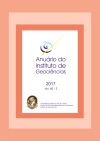Huge Miocene Crocodilians From Western Europe: Predation, Comparisons with the “False Gharial” and Size
DOI:
https://doi.org/10.11137/2017_3_117_130Keywords:
Tomistoma lusitanica, Miocene, Predation, gomphotheres, Tomistoma schlegeliiAbstract
As shown here on the basis of bitten teeth, the diet of the huge, lower to early upper Miocene Tomistoma lusitanica included some of the largest contemporaneous, terrestrial mammals, including adult or senile gomphotheres (Gomphotherium angustidens). One of the latter would be, in a rough estimate, about 50 years old at death. Bite impressions are discussed, including marks resulting from impact, intense attrition and eventual crushing. The teeth of very large-sized tomistomines would have a not restricted to prehension role, they also acted as true cone devices for crushing hard parts. Crushing - non-tectonic efects - have also been observed on a suid fossil. The so far obtained results may point out that the very basic reason of the extant false-gharial, Tomistoma schlegelii’s prevailing ichthyophagy may be human pressure that prevents them to attain their possible maximum size, and hence to capture larger prey. The importance of immigration from Asia and biogeographic ainities is stressed. This seems obvious after the simultaneous presence of Tomistoma and Gavialis in westernmost Eurasia. Diferent data from North Africa do not contradict these views. Extrapolations based on the Miocene false-gharials contribute to a better understanding of the surviving species. Similarity is even greater if account is taken of the closer morphological cranial features between the fossil forms under study and the largest known skull of all extant crocodilians, a T. schlegelii. Estimations of Tomistoma lusitanica’s overall length, somewhat in excess of 8 meters, conirm this form attained a giant size. These top predators undoubtedly preyed or scavenged upon very large prey. They also scavenged on corpses. Tomistoma lusitanica undoubtedly was one of the largest crocodilians that ever existed and whose maximum dimensions seem to have attained those of the Siwaliks’ Rhamphosuchus crassidens, long regarded as the Neogene nec plus ultra in size. Tomistoma lusitanica was one of the largest crocodilians from all times, and even the largest western Eurasia reptile after the age of the dinosaurs.Downloads
Download data is not yet available.
Downloads
Published
2019-07-30
How to Cite
Antunes, M. T. (2019) “Huge Miocene Crocodilians From Western Europe: Predation, Comparisons with the ‘False Gharial’ and Size”, Anuário do Instituto de Geociências. Rio de Janeiro, BR, 40(3), pp. 117–130. doi: 10.11137/2017_3_117_130.
Issue
Section
Article
License
This journal is licensed under a Creative Commons — Attribution 4.0 International — CC BY 4.0, which permits use, distribution and reproduction in any medium, provided the original work is properly cited.















